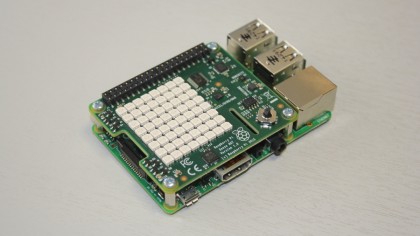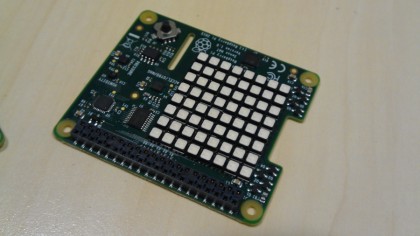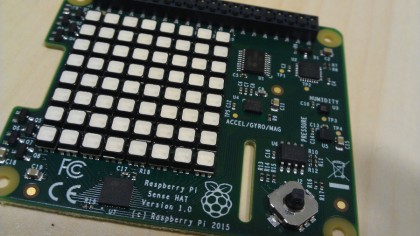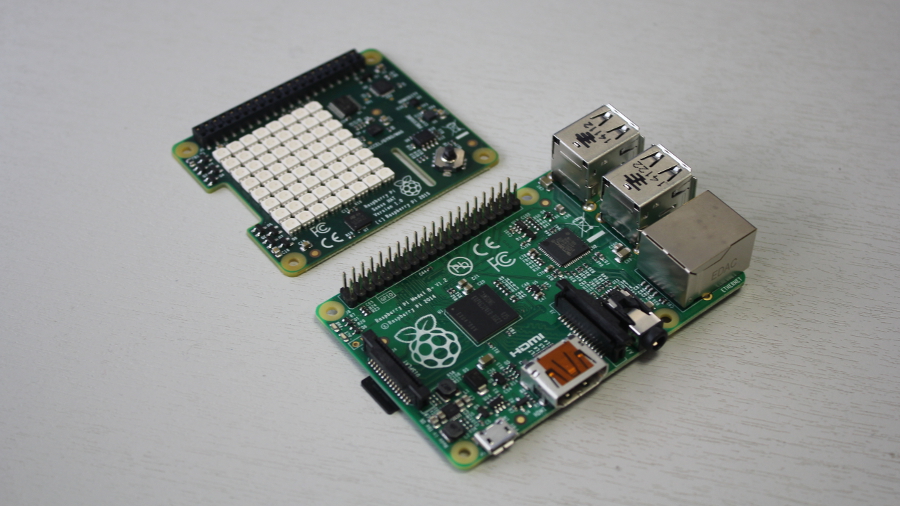Early Verdict
A very smart add-on for the Raspberry Pi which is easy to get to grips with and has tons of potential for educational use.
Pros
- +
Easy to use
- +
Highly educational
- +
Tied into a fascinating project
Cons
- -
Careful with that bright LED matrix
Why you can trust TechRadar
The Raspberry Pi has travelled across the sea, powered robots, taught entire classes and is now set to reach into space with the AstroPi project. This is a science project where schools from across the United Kingdom are being asked to devise experiments which, if chosen, will be run on the International Space Station (ISS) by ESA astronaut Tim Peake.
AstroPi is also the name for the hardware platform designed for use with the A+, B+ and Raspberry Pi 2 boards (although it can work on all Pi models). The dimensions of AstroPi enable it share the same form factor as the A+ and fit neatly on top of the B+.

Sensors aplenty
The AstroPi board – which is priced at around £26 or $35 – is a data capture and science platform that offers an extensive suite of sensors. For starters, it has a temperature and humidity sensor and next to this we have a pressure sensor. The final sensor combines an accelerometer, gyroscope and magnetometer for positional data. Not content with providing sensors, AstroPi also provides an 8x8 grid of multi-colour LEDs (neopixels) and a simple joystick input device. The LED matrix is exceptionally bright (and a diffuser such as a piece of paper should be used to protect your sight).
But hardware is nothing without software, so AstroPi uses a Python 3 library, which enables easy access to the sensors and other components of the board. Each component comes with its own function to handle the collection of data, making it very accessible for children to use for hacking. We tested the temperature sensor and were able to output the temperature to the LED matrix, while controlling the colour of the LEDs based on temperature in 20 minutes of hacking – very easy!

AstroPi can be used in many different applications: from simple temperature logging to complex scientific experiments to monitor air pressure at altitudes using balloons or drones. In a creative application, AstroPi could be easily linked to MinecraftPi to use the sensors to control the game world or the LED matrix could be used to direct a player to a hidden location.
Pi me to the moon
Of course, the AstroPi's destination is the ISS, where a series of experiments will be conducted, which have been created by children in the UK as part of a national competition. The code and data generated by the experiments will be shared with every child in the world and they can recreate the experiments and compare their results to that of Tim Peake's.
This will be the first time that this kind of project has ever been attempted, which is very exciting. With sensors, such as the pressure and temperature ones, we'll clearly see in the results how pressure and temperature on board the space station fluctuates through an orbit of the Earth. It's going to be fascinating to see what experiments can be devised by children and to try these ourselves.

The Raspberry Pi Foundation, Airbus and the European Space Agency have worked together for just under a year to design, test and certify the board for flight to the ISS where it will be connected to a Raspberry Pi B+ to conduct the experiments (the B+ model was chosen as it takes time to certify a device). The ISS has strict safety measures, particularly as the Raspberry Pi can't be powered from the station's main power and will have to be powered via a laptop USB port.
Early verdict
This is a fantastic board full of great potential for use in education and for hobby hackers. The ease of use, matched with the selection of sensors creates an easy point of entry for scientific discovery.
What is a hands on review?
Hands on reviews' are a journalist's first impressions of a piece of kit based on spending some time with it. It may be just a few moments, or a few hours. The important thing is we have been able to play with it ourselves and can give you some sense of what it's like to use, even if it's only an embryonic view. For more information, see TechRadar's Reviews Guarantee.
